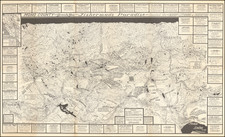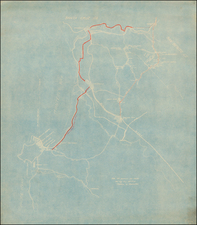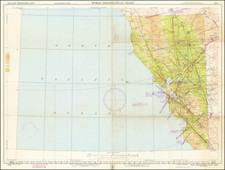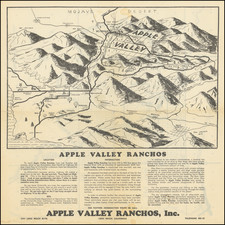One of the rarest of all gold rush era maps. The map extends form Monterey and the centeral San Joaquin Valley to the Prairie Butes, well north of Sacramento, providing one of the earliest detailed topographical accounts of the SF Bay and Gold Regions of California. Along Wilkes primary trail from San Francisco to north of Sacramento are many annotations regarding the natural resources and topography. Several early mines are noted, as are other areas simply labeled Gold. The map is also interesting for its treatment of SF Bay and vicinity, including soundings, topographical detail, Indian Villages, raods, missions, pueblos, etc. The map was issued in Wilkes now rare Western America, including California and Oregon… The map represents the latest information at the dawn of the gold rush. Streeter referred to the Wilkes book as essentially the first guidebook to the Pacific Coast. Wheat observes that Wilkes' maps, though early 1849 in type, and requiring to be read in the light of what has been quoted, are enlightening now as then. The map is rarely well preserved and all examples we have noted on the market in recent years were restored. This example is backed with japan paper, with occasional minor loss at the fold interesections, with repaired fold splits and tears. Still, a presentable copy of this rarity. Wheat 646, Wheat Gold Region 134, Wagner-Camp 175a:1, Streeter 3326.
Charles Wilkes (1798-1877) was a skilled naval surveyor and the commander of the United States South Seas Exploration Expedition (U.S. Ex. Ex.), the largest scientific voyage ever mounted by the United States. Wilkes was born in New York City and began to sail in merchant vessels from 1815-1917.
Wilkes joined the United States Navy as a midshipman in 1818; by 1826, he had risen to the rank of lieutenant. Fascinated by hydrography, Wilkes studied triangulation and surveying with Ferdinand Hassler, the first superintendent of the United States Coast Survey. This expertise and initiative led him to be named Director of the Navy’s Depot of Charts and Instruments in 1833.
After being stalled by the Navy, U.S. Ex. Ex.—the U.S. response to the scientific voyages of Cook and La Perouse—was finally preparing to sail in the late 1830s. Wilkes was offered command, thanks to the heavy surveying focus on the voyage. He was given command of six vessels and nine scientists. However, the ships were not well supplied and the expedition was executed with some difficulty.
The ships left Norfolk in August 1838. They went in convoy to Tierra del Fuego, where they split and some explored in the South Seas and others in the South Atlantic. In late 1830, Wilkes surveyed portions of Antarctica that today are named for him (Wilkes Land). From spring 1840, the ships explored the mid- and North-Pacific. In June 1842, Wilkes returned to New York Harbor with only two of his six ships and a mountain of ethnographic, botanical, and natural historical specimens, as well as reams of observations, drawings, and charts.
Wilkes was met with a court martial; while he was acquitted of most charges, he was convicted of illegal punishment and reprimanded by the Secretary of the Navy. Despite this, he was promoted commander in 1843, captain in 1855, and commodore in 1862.
Wilkes spent much of his remaining career overseeing the publications of the expedition. The first official publication to appear was Wilkes’ rambling five-volume narrative of the voyage, accompanied by a folio atlas, in 1844. A further 19 volumes were prepared over the course of 30 years, each on a different scientific topic, although only 14 were ever distributed. Perhaps the most impressive legacies of the expedition were the almost 250 charts Wilkes prepared in two atlases (completed 1858, published 1861, but not distributed until after the Civil War). These formed the basis of the United States Hydrographic Office.
Wilkes served in the Union fleet in the Civil War. In 1864 he was before a court-martial again, this time for the publication of a private letter to the Secretary of the Navy. He was found guilty. He retired two years later, in 1866, and died in Washington D. C. in 1877.










![[Imperial Valley]](https://storage.googleapis.com/raremaps/img/small/69292.jpg)



